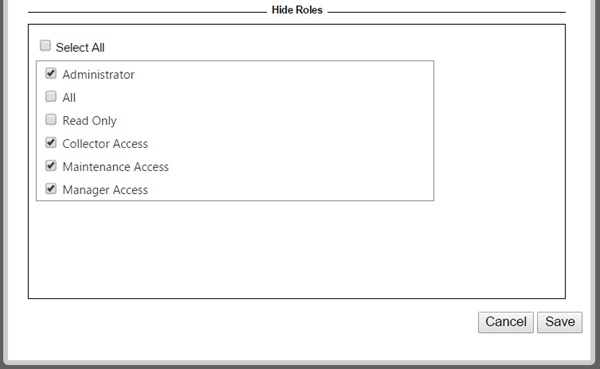Create New Profile
AssetWise Inspections has one main profile by default, which can be edited to fit the desired specifications, but the user can create as many profiles as necessary. Selecting New within the profile cell activates the following popup (selecting Edit activates a popup with similar information):
- Profile Name – This is the name of the profile that will be used throughout AssetWise Inspections.
- Profile Type:
- Manage All – The "Manage All" option encompasses the entire system. A system with only one profile would use this option because it allows access to all users.
- Manage Self and Below – The "Manage Self and Below" option encompasses all users within the selected profile as well as all users within the selected profile’s child profiles.
- Children Only – The "Children Only" option is for profiles that can be child profiles of multiple profiles in the system but cannot have child profiles themselves. For instance, a profile created strictly for contractors might use the "Children Only" setting.
- Activation Key – AssetWise Inspections does not currently require an activation key. Many Bentley products are subscription based and use activation keys as a means of verifying that the user has purchased a subscription. AssetWise Inspections may require an activation key in the future.
- Billable Profile – As with the activation key, AssetWise Inspections is not currently requiring the billable profile to be entered.
- Copy Settings from Profile – This option allows the admin to set up a new profile’s settings by copying the settings of an existing profile. Most of these settings have been removed from AssetWise Inspections, and the settings that remain are internal. In most cases, the settings for a new profile should just be copied from the main profile.
- Manage Roles:



